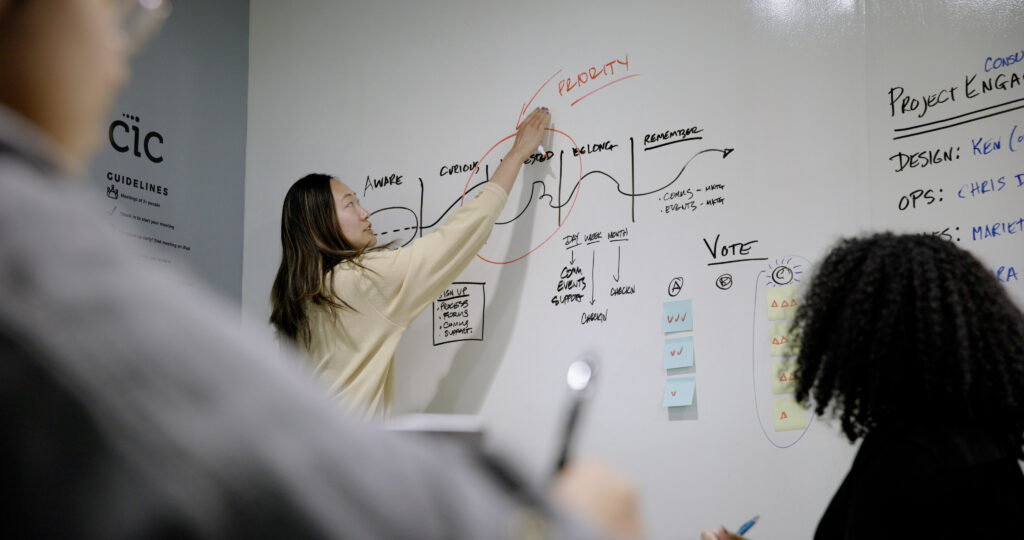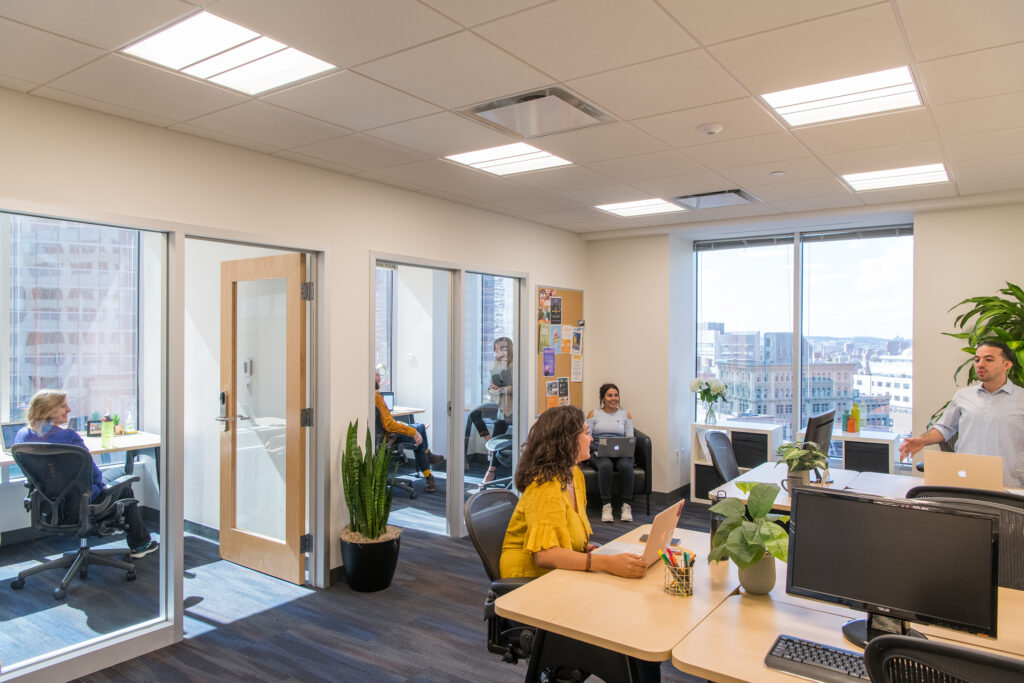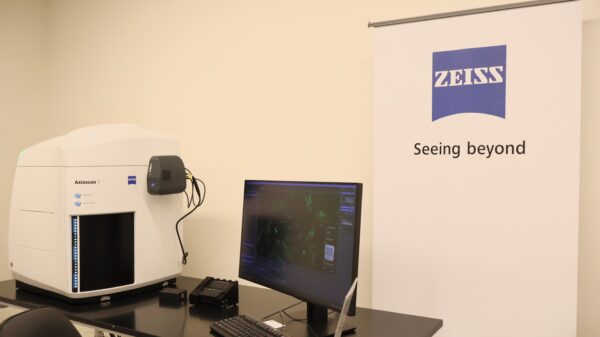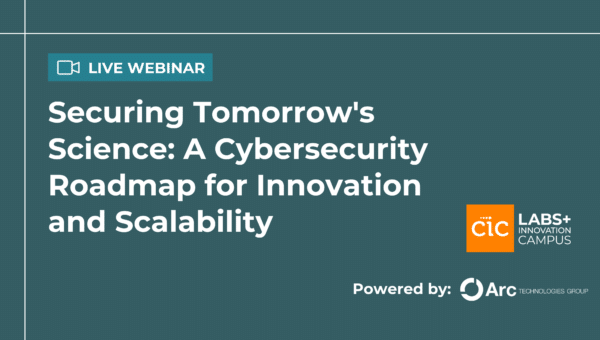Six months into 2024, return-to-office mandates and related policies remain key topics discussed among business leaders and media alike.
Location is only one factor to consider when determining how work is best accomplished. Employers must also think strategically about how the workspace is set up and activated.
In the Redefining the Workspace to Strategically Support Corporate Culture, Innovation, and Growth report from HBR Analytic Services (HBRAS), sponsored by CIC, nearly every respondent (97%) agreed workspace decisions impact company culture and that the quality of an organization’s company culture impacts its ability to succeed (98%).
Because physical workspace, company culture, and business outcomes are so closely connected, aligning these elements with broader business strategy is important. In fact, 89% of respondents in the HBRAS report believe that organizations can benefit from aligning their workspace strategy with their broader business strategy.
What does this mean for your business today? Halfway through the year, many companies may not be in a position to invest in major office renovations or build out a new space. The good news is that strategic workspace adjustments do not have to come with a hefty price tag to significantly impact employee experience and 2024 performance.
Table of Contents
- Defining the purpose and benefits of working in person
- Physical workspace changes to consider in the second half of 2024
- Creating third spaces to improve employee experience
- The benefits of the right type of space for your company
Define the purpose and benefits of working in person
Before making any physical changes, determine why you want employees to come into a physical location versus working remotely. Articulating the purpose of in-person work is as necessary as creating the space to do it.
“Leaders need to be clear with employees about the purpose and value of working together in-person, including how it ties back to company goals – establishing that understanding will always be more successful than mandating an arbitrary number of days in the office,” said Stacey Messier, GM of New England for CIC.
Messier recommends discussing completed projects in person to showcase the benefits of gathering, such as the results of a whiteboard session. Highlighting tangible examples of what is possible can increase excitement to come into the physical workspace.

An option for creating community and purpose is to create mentoring and professional growth opportunities for employees. LinkedIn surveyed Gen Z professionals and found that 76% want more learning opportunities at work.
“I have worked at very large companies and small ones – visibility is important at every company, especially for those early in their careers,” said Messier. “The ability to build trust happens more authentically and in a richer, deeper way in person.”
Team members of all ages benefit from these programs. An AARP survey found that 80% of those with mentorship experience believe that younger workers can offer new perspectives, significantly higher than what those without mentorship experience reported.
Physical workspace changes to consider in the second half of 2024
Once you communicate the expectations and purpose for in-person work, ask if the facilities and amenities offered make the workspace inviting and functional. There may be some simple changes that can improve the ergonomics of the space to help improve employee well-being, experience, and productivity.
If working in an office setting, consider upgrading chairs, offering standing desks, and looking into external keyboard or ergonomic mouse upgrades. Adjustable chairs and anti-fatigue mats can help with common ergonomic issues in a lab setting.
Furniture is not the only addition that can optimize the workspace for comfort. Access to natural light and plants in the workspace can help alleviate stress and increase focus, among other benefits. Some companies might consider offering fitness perks, upgrading the office coffee machine, or purchasing speakers to play background music as tools to create a more welcoming work environment.
In-person work has many benefits, especially for collaborative tasks, discovery, and innovation. However, it’s important to remember that not every employee is exactly alike. Accommodating different work styles and needs might involve offering dedicated spaces for in-depth work or creating a culture where setting aside time for quiet hours is not only encouraged but also becomes part of the workplace’s core values.

Think critically about how your company uses its space and how it can accommodate different kinds of work. Are there private spaces like phone booths or offices with doors for sensitive calls? For teams that need to collaborate, consider whether the set-up and size of conference rooms or multi-purpose spaces can accommodate different types of meetings.
The right technology infrastructure is necessary to support a hybrid workforce. According to Gallup, more than half of US workers are hybrid workers and 27% of the workforce remains exclusively remote. Upgrading WiFi connectivity, for example, can make video conferencing easier for hybrid teams and improve the experience of in-person employees.
Creating third spaces to improve employee experience, in-person collaboration and relationship-building
Physical space is only half the equation when it comes to workspace adjustments that promote collaboration and innovative thinking – how you activate the space matters just as much.
The HBRAS report found that 90% of respondents think physical workspace is beneficial for employees working on collaborative tasks, with one in three businesses reassessing their workspace to encourage in-person collaboration in recent years.
A well-appointed office kitchen and dining space can still be underutilized if people feel they must eat lunch at their desks or quickly grab coffee without time for chit-chat with other employees. Even seemingly small in-person interactions are vital for relationship building, growing authentic trust within the company, and increasing workplace psychological safety.
Activating these spaces – or creating a “third space” for conversation and connection – means finding ways to encourage people from different teams to interact, mingle, and talk to each other.
“There’s this opportunity for something that’s a little more connected and a little more inspiring. These are some of the elements companies are reaching for in what we’d call creating community or creating culture,” Tim Rowe, CEO and founder of CIC, shared with Fortune.
In the second half of 2024, consider planning intentional, regular community-building gatherings to foster a more connected culture within your workspace. Offering these events at varying times and locations helps ensure all employees have a chance to benefit. Working parents, for instance, may find that after-work drinks can interfere with evening family routines.
Our CIC Innovation Campuses offer programming and events with this in mind. One of our popular events is the Weekly Wakeup breakfast we host every Tuesday, which activates the kitchen area and encourages community building.
Similarly, CIC St. Louis and partner Filament host the new SuperCollider event series on Fridays during traditional work hours. Though many networking events are held in the evenings, the full day of programming aims to minimize disruption for the teams during the workweek while offering time and space to forge meaningful connections.

The benefits of the right type of space for your company’s stage, growth plans and future
According to the Redefining the Workspace to Strategically Support Corporate Culture, Innovation, and Growth, companies that made changes to their workspaces reported business benefits including:
- Greater operational flexibility (39%)
- Improved collaboration (37%)
- Stronger company culture and engagement (34%)
- Reduced costs (27%)
- More employees meeting and working in person (26%)
While the smaller changes we described above can go a long way to improving the space you’re currently in, there is even more to consider if your current lease is expiring or your business needs have changed. Your company may need to look for something different to best align the workspace with your business strategy and future plans.
When looking at new spaces, it’s important to think beyond just the cost per square foot or sheer size alone. A holistic, strategic vision of workspaces includes assessing offered amenities, if the space is furnished, access to specialized equipment, and the amount of private office and collaborative areas. Identifying the right mix of these factors helps align your workspace, strategy, and plans for growth.
Try externally managed, flexible shared workspace
Working in flexible, shared space managed by our CIC team members helps redirect focus toward finding solutions, building community, and creating a better world. The benefits of choosing flexible, shared office or lab space include:
- Flexibility to meet the changing needs of your business
- Access to specialized equipment that expands operational flexibility
- Culture-building opportunities within your company, community, and industry
- In-person collaboration in a physical space that also supports hybrid work
- Reduced costs without sacrificing value
Across our innovation campuses, CIC clients and members are working to solve some of the most important challenges facing the world. CIC office and lab spaces offer areas for collaboration, individual work, and networking with like-minded innovators. Our team is happy to discuss options that can best suit your needs.
Interested in learning more about workspace adjustments? Download your copy of the full Redefining the Workspace to Strategically Support Corporate Culture, Innovation, and Growth report.




